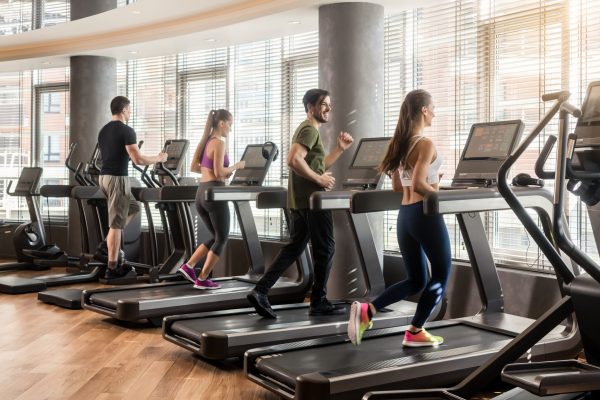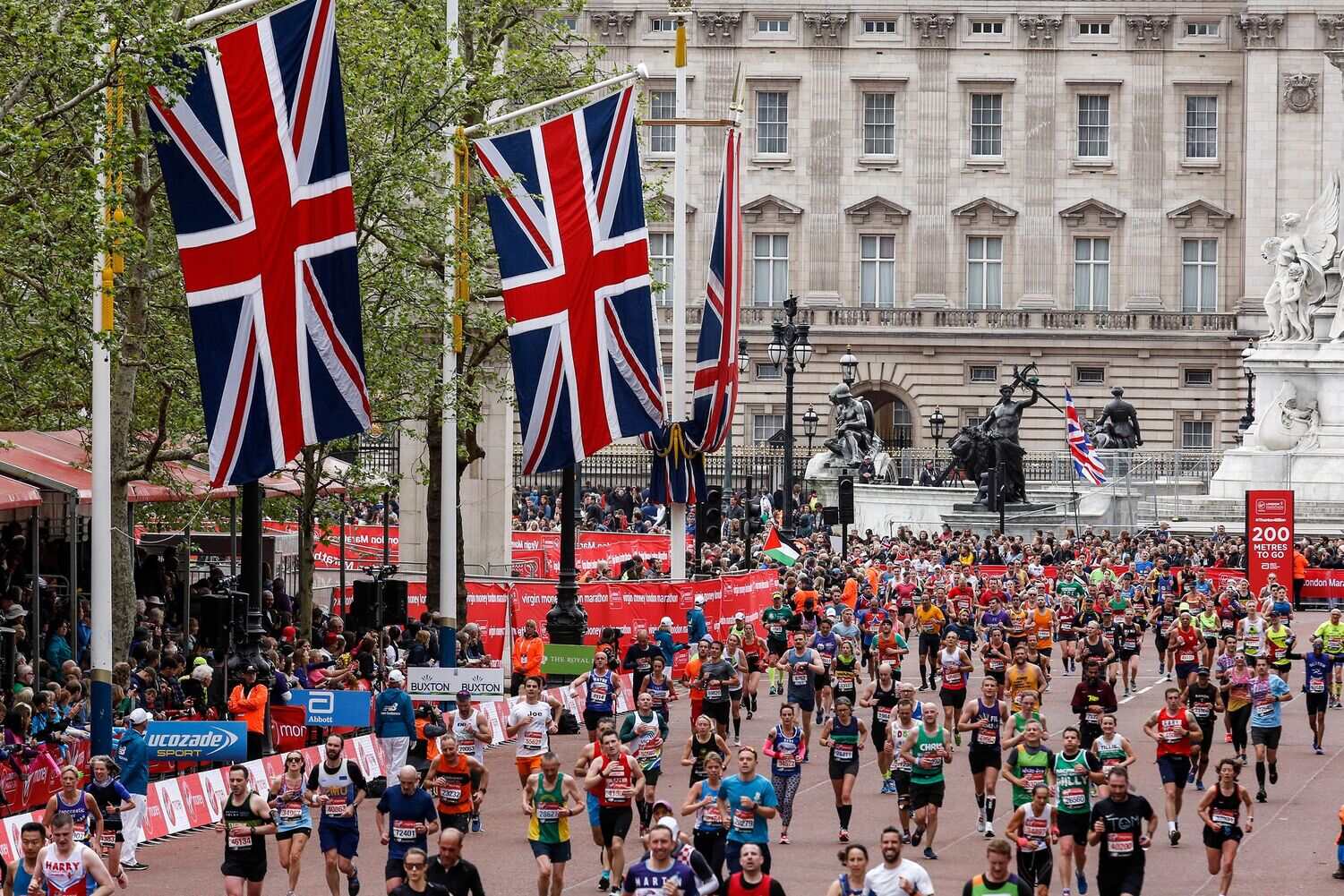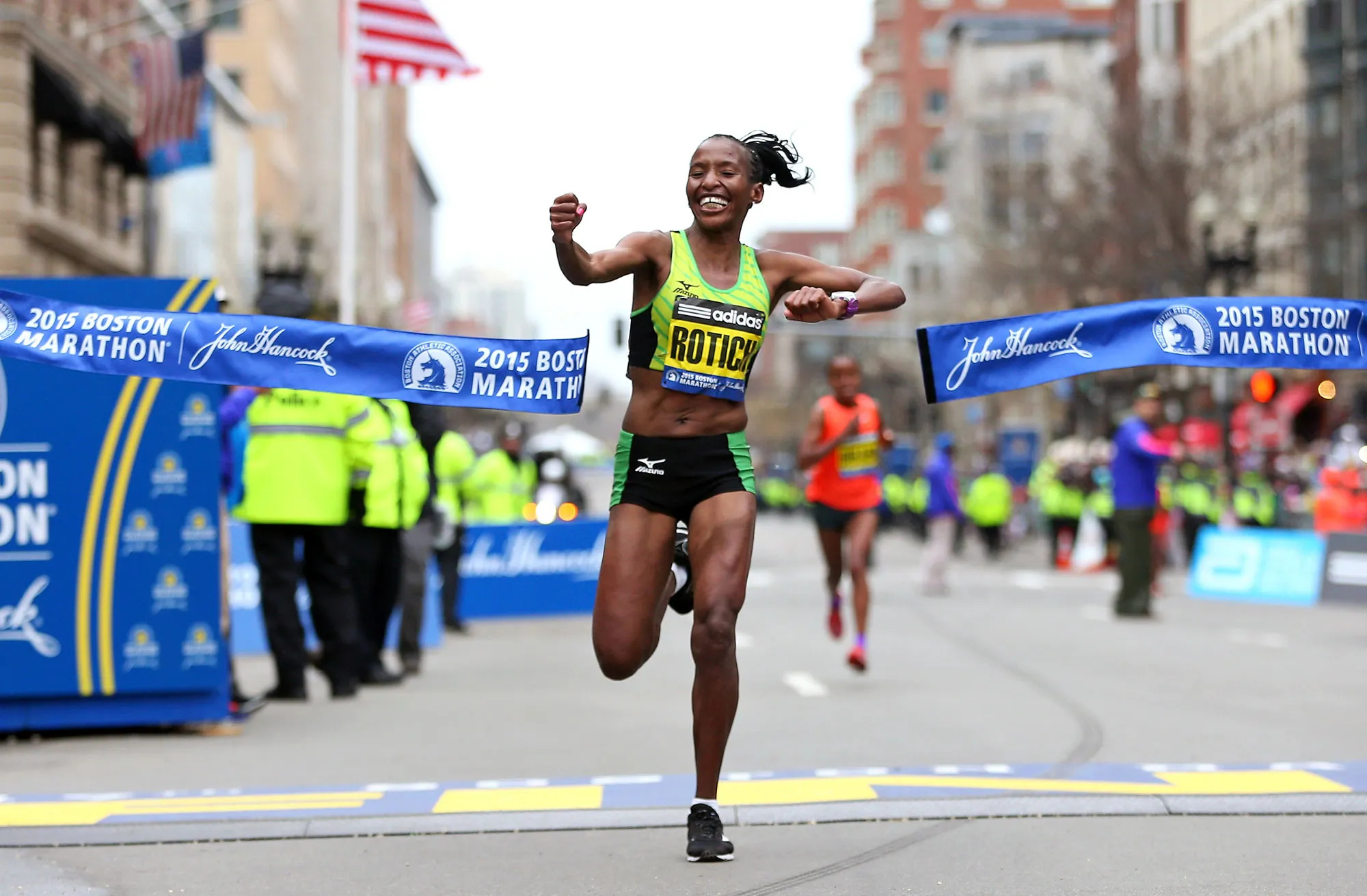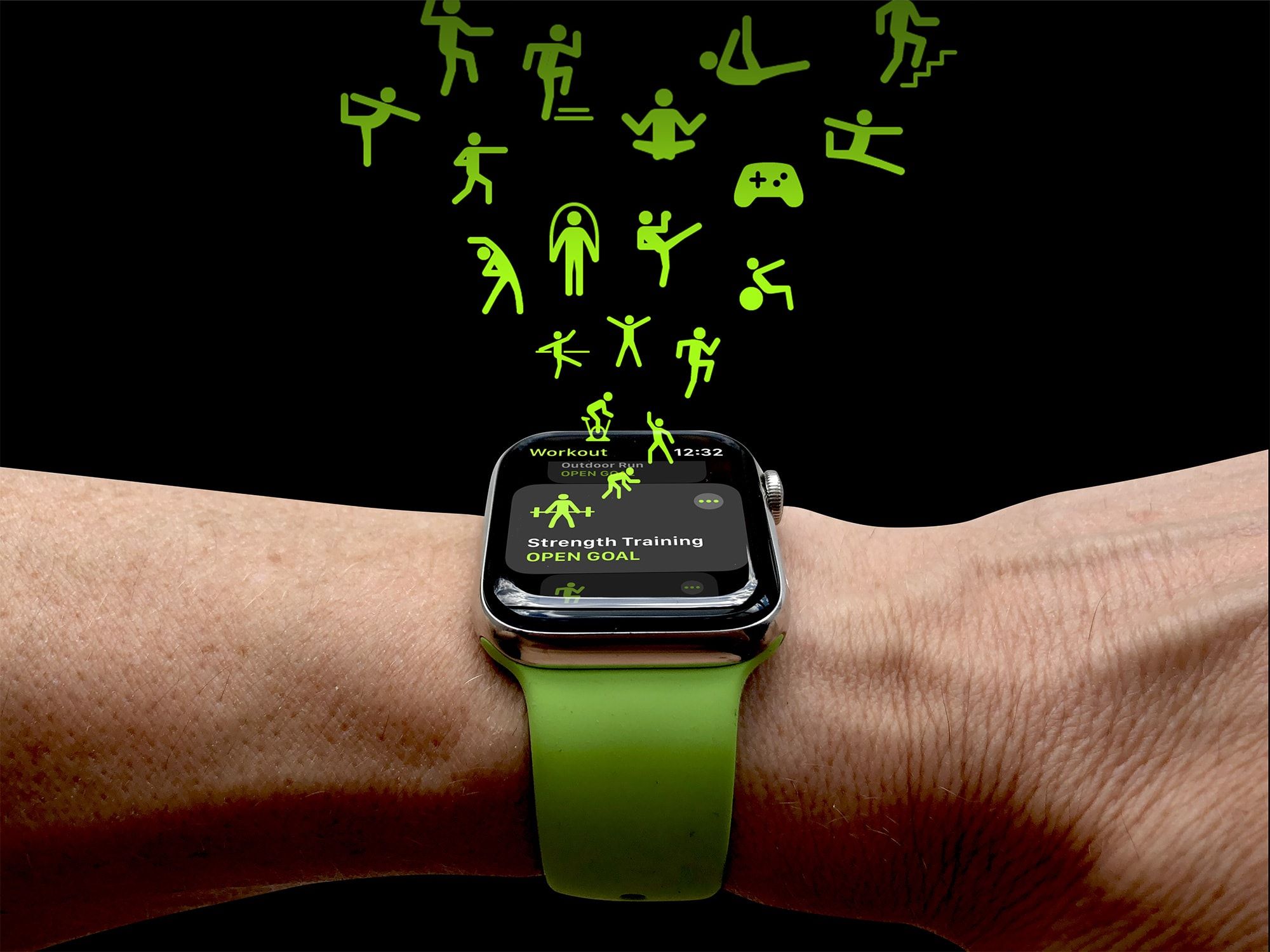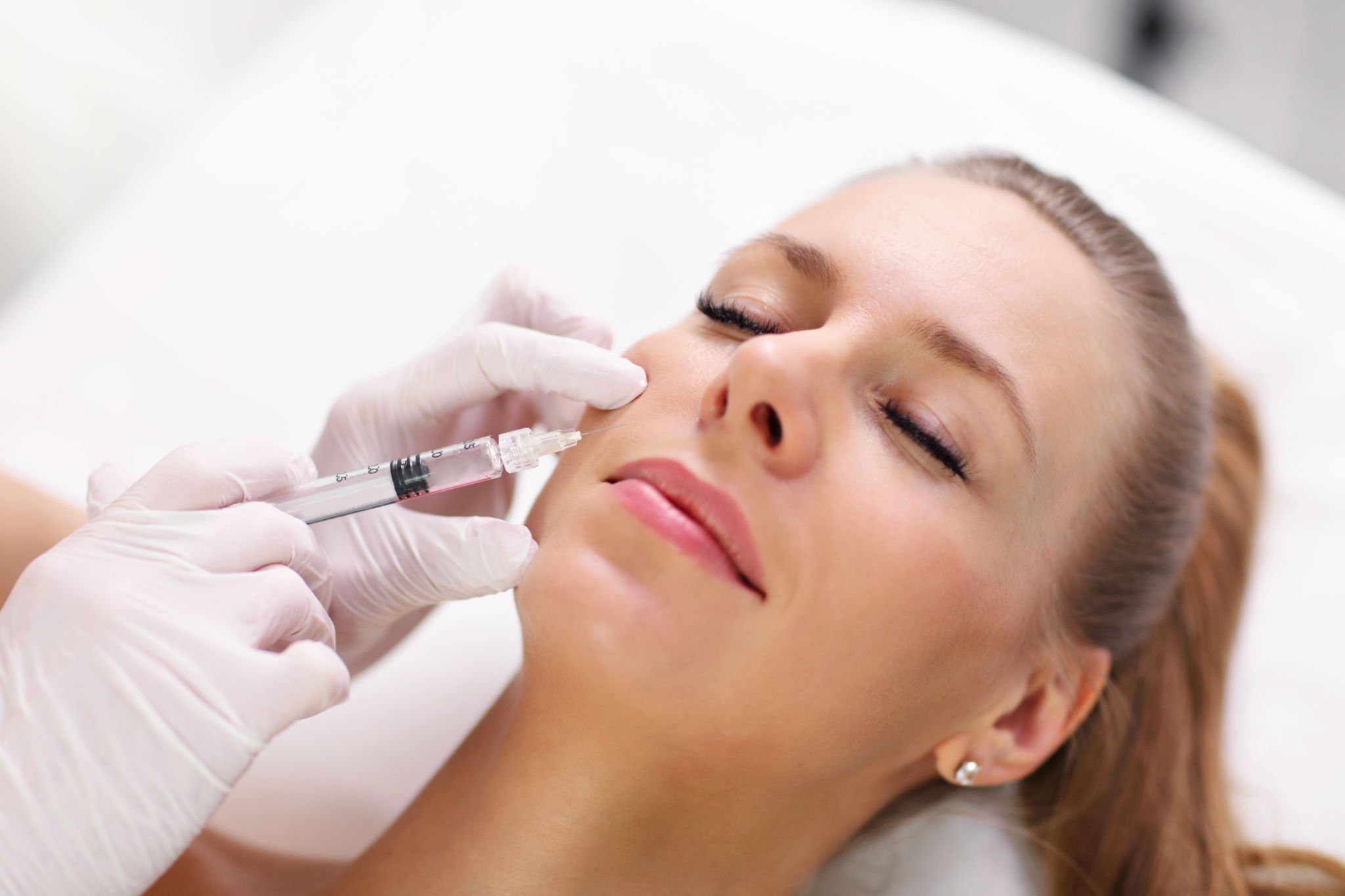

Featured
How Long After Lipo Can I Workout
Modified: January 2, 2024
"Featured: Learn about the right timing and precautions for resuming workouts after liposuction. Discover how long you should wait before hitting the gym post-surgery."
Introduction
Welcome to our comprehensive guide on exercise after liposuction. Many people undergo liposuction to achieve their desired body shape by removing excess fat from specific areas. However, post-surgery, it is crucial to understand the recovery process and the appropriate time to resume physical activities, including workouts.
Liposuction is a popular cosmetic procedure that involves a targeted removal of fat deposits through a suction technique. It is often performed on areas such as the abdomen, thighs, hips, arms, chin, and neck. While liposuction can provide significant results, it is essential to prioritize your recovery to ensure optimal healing and avoid any complications.
The recovery period after liposuction typically involves some restrictions on physical activities, including exercise. During this time, your body needs to rest and heal from the surgical procedure. Engaging in strenuous physical activities too soon can hinder the healing process and even lead to complications.
In this guide, we will discuss the recovery period after liposuction, the postoperative restrictions you may encounter, and most importantly, when you can safely resume exercising. We will also explore the benefits of exercise after liposuction and provide guidelines on the types of exercises to start with.
It is crucial to note that every individual’s recovery process may vary based on factors such as the extent of the liposuction procedure, the area treated, and the individual’s overall health. It is always advisable to consult with your surgeon or healthcare professional for personalized advice regarding your specific case.
Understanding Liposuction
Liposuction is a surgical procedure that aims to remove excess fat from specific areas of the body. It is often sought by individuals who have struggled to eliminate stubborn fat deposits through diet and exercise alone. Liposuction can target areas such as the abdomen, hips, thighs, arms, back, and even the face and neck.
During the liposuction procedure, small incisions are made in the target area, and a cannula is inserted to suction out the fat. The technique used may vary, but the goal is to sculpt and contour the body to create a more pleasing aesthetic appearance. Liposuction is not a weight-loss procedure but rather a body contouring technique.
It is important to note that liposuction is not a substitute for a healthy lifestyle. It is essential to maintain a balanced diet and regular exercise routine to sustain the results achieved through liposuction.
Liposuction is a safe and commonly performed procedure, but it is still surgery and carries some risks. It is crucial to choose a board-certified surgeon with extensive experience to minimize the chances of complications. Always consult with your surgeon and discuss your goals, expectations, and any concerns you might have before deciding to undergo liposuction.
It is also important to have realistic expectations about the results of liposuction. While the procedure can provide significant improvements in body contouring, it does not guarantee perfection or completely eliminate all fat cells. It is crucial to understand that maintaining a healthy lifestyle post-surgery is essential to preserve the results and ensure long-term satisfaction.
Liposuction can be performed under various anesthesia options, including local anesthesia, general anesthesia, or intravenous sedation. Your surgeon will determine the best approach based on the extent of the procedure and your specific needs.
In the next section, we will delve into the recovery period after liposuction and the necessary precautions and restrictions during this time to promote proper healing.
Recovery Period
The recovery period following liposuction is a crucial time for your body to heal and adjust after the surgical procedure. The length of the recovery period can vary depending on the extent of the liposuction, the areas treated, and individual factors such as overall health and healing ability.
After the surgery, you can expect some swelling, bruising, and discomfort in the treated areas. Your surgeon may provide you with a compression garment to wear, which helps reduce swelling and provides support to the treated areas. It is important to follow your surgeon’s instructions regarding the use of compression garments and any medications prescribed.
During the early stages of recovery, it is normal to experience some drainage from the incision sites. This is a part of the healing process, and your surgeon will provide guidance on how to manage it. It is essential to keep the incision sites clean and dry to minimize the risk of infection.
It is important to note that every individual’s recovery experience will be unique. However, there are some general guidelines to follow during the recovery period after liposuction:
- Rest and allow your body to heal: It is essential to prioritize rest and avoid strenuous physical activities during the initial recovery period. Follow your surgeon’s instructions on when it is safe to start resuming normal activities.
- Avoid swimming or soaking in water: It is typically advised to avoid swimming pools, hot tubs, or soaking in water for a few weeks after the surgery to minimize the risk of infection.
- Avoid excessive sun exposure: Direct sunlight can be damaging to the healing tissues. It is crucial to protect the treated areas from the sun’s rays by covering up or using sunscreen with a high SPF.
- Follow a healthy diet: Proper nutrition plays a vital role in the healing process. Eating a balanced diet rich in nutrients can support the recovery and help optimize results.
- Attend follow-up appointments: Regular follow-up visits with your surgeon are essential to monitor your progress, address any concerns, and ensure proper healing.
It is important to remember that the recovery period can vary from person to person. Some individuals may experience a faster recovery, while others may require a longer time to heal. It is crucial to be patient and allow your body the time it needs to properly recover.
Now that we have covered the recovery period after liposuction let’s move on to discussing the postoperative restrictions you may need to adhere to.
Postoperative Restrictions
Following liposuction surgery, there are certain postoperative restrictions that you need to adhere to in order to promote proper healing and reduce the risk of complications. These restrictions are put in place to ensure a smooth recovery process and maximize the effectiveness of the procedure.
Here are some common postoperative restrictions that your surgeon may advise you to follow:
- Avoid vigorous activities: Engaging in strenuous physical activities such as high-intensity workouts and heavy lifting should be avoided during the initial stages of recovery. These activities can put strain on the treated areas and hinder the healing process.
- Limit movement and bending: It is important to limit excessive movement and bending, especially in the areas that have undergone liposuction. This helps to prevent stretching or straining the incisions and sutures, allowing them to heal properly.
- Avoid wearing tight clothing: Tight clothing, including restrictive waistbands or compression garments that are too tight, can impair blood circulation and impede the healing process. It is important to wear loose-fitting clothing during the recovery period.
- Avoid tobacco and alcohol: Smoking and consuming alcohol can hinder the healing process and increase the risk of complications. It is best to avoid tobacco and alcohol during the recovery period to promote optimal healing.
- Take prescribed medications: Your surgeon may prescribe medications, such as antibiotics or painkillers, to manage pain and prevent infection. It is essential to take these medications as directed and to notify your surgeon of any adverse reactions or concerns.
- Follow proper wound care: Proper care of the incision sites is crucial to prevent infection and promote healing. Your surgeon will provide instructions on how to clean and dress the wounds.
It is important to note that each individual’s recovery process may vary, and your surgeon will provide specific instructions based on your unique case. It is essential to follow these instructions diligently to ensure a smooth recovery and achieve optimal results.
Now that we have discussed the postoperative restrictions, let’s move on to the important question of when you can safely resume exercising after liposuction.
When Can I Start Exercising?
One of the most common questions after undergoing liposuction surgery is when it is safe to resume exercising. Exercise is an important part of maintaining a healthy lifestyle and can contribute to long-term results after liposuction. However, it is crucial to allow your body enough time to heal before engaging in any strenuous physical activities.
The timeline for resuming exercise after liposuction can vary depending on several factors, including the extent of the procedure, the areas treated, and individual healing capabilities. It is important to consult with your surgeon, as they will provide specific guidelines tailored to your unique case.
In general, light walking or gentle movement can be started shortly after the surgery to promote blood circulation and prevent the formation of blood clots. This can be done as early as a day or two after the procedure. However, it is important to listen to your body and not push yourself too hard during this initial phase.
The timeframe for gradually increasing the intensity and duration of your exercise routine will typically depend on the following factors:
- The extent of the liposuction procedure: If you had a more extensive liposuction procedure, such as multiple areas treated or larger volumes of fat removed, you may need a longer period of time before resuming intense exercise.
- Your body’s natural healing ability: Each individual’s body heals at its own pace. Some people may recover faster, while others may require more time to heal fully.
- Your surgeon’s recommendations: Your surgeon will have the best understanding of your specific case and can provide personalized recommendations regarding when it is safe to resume exercise.
Typically, most surgeons recommend waiting at least two to four weeks before gradually reintroducing moderate exercise. This may include activities such as light cardio exercises, yoga, or low-impact workouts. It is important to gradually increase the intensity and duration of your exercise routine over time, listening to your body and avoiding any pain or discomfort.
High-impact or intense exercises, such as running, weightlifting, or intense cardio workouts, should be avoided for a longer period of time. It may take six weeks or more before you can safely resume these types of activities. However, it is important to consult with your surgeon for their specific recommendations based on your case.
Remember, it is crucial to prioritize your recovery and not rush into intense exercise too soon. Pushing yourself too hard too early can lead to complications and hinder the healing process. Patience and a gradual return to exercise will provide the best long-term results.
Now that you have an idea of when you can start exercising after liposuction, let’s explore the benefits of exercise in the postoperative period.
Benefits of Exercise After Liposuction
Exercise plays a vital role in maintaining a healthy lifestyle and can offer numerous benefits after undergoing liposuction surgery. Engaging in regular physical activity post-surgery can contribute to improved overall well-being, enhance the results of the procedure, and support long-term weight management. Here are some of the key benefits of incorporating exercise into your postoperative recovery:
1. Promotes healing and reduces swelling: Gentle exercise, such as walking or light cardio, can help improve blood circulation, which aids in the healing process after liposuction. Increased blood flow helps deliver oxygen and nutrients to the treated areas, reducing swelling and promoting faster recovery.
2. Preserves muscle tone and body contour: Liposuction primarily targets fat deposits, but it does not address muscle tone. Engaging in strength training exercises after the recovery period can help maintain and improve muscle tone, enhancing the overall body contour.
3. Boosts metabolism: Regular exercise can increase your metabolic rate, allowing your body to burn calories more efficiently. This can help prevent weight gain and support long-term weight management after liposuction.
4. Enhances mental well-being: Exercise has been shown to release endorphins, which are natural mood-boosting chemicals in the brain. Engaging in physical activity can help reduce stress, anxiety, and improve overall mental well-being during the postoperative period.
5. Improves cardiovascular health: Incorporating cardiovascular exercises, such as brisk walking, cycling, or swimming, into your routine can improve heart health and stamina. This, in turn, can enhance your overall fitness levels and support a healthy lifestyle after liposuction.
6. Prevents weight gain: Liposuction is not a weight-loss procedure but rather a body contouring technique. Regular exercise can help prevent future weight gain by burning calories and maintaining a healthy body weight. Combining exercise with a balanced diet can help sustain the results achieved through liposuction.
7. Boosts self-confidence: Engaging in regular exercise and witnessing positive changes in your body can significantly boost self-confidence and body image. Seeing the value of your efforts can further motivate you to maintain a healthy lifestyle even after your recovery period.
It is important to note that while exercise can provide numerous benefits, it is essential to consult with your surgeon before beginning any exercise routine. They will provide personalized recommendations based on your specific case and guide you on when it is safe to start exercising and which activities to prioritize.
Now that we have explored the benefits of exercise after liposuction, let’s discuss the types of exercises to start with during your recovery period.
Types of Exercises to Start With
During the recovery period after liposuction, it is important to gradually reintroduce physical activity into your routine. Starting with low-impact exercises that do not strain the treated areas can help promote healing and minimize discomfort. Here are some types of exercises to consider during the early stages of your recovery:
1. Walking: Walking is a great low-impact exercise that can be started shortly after the surgery. Begin with short walks around your neighborhood or on a treadmill and gradually increase the duration and intensity as your body allows. Walking not only helps improve circulation but also aids in reducing swelling.
2. Yoga: Gentle yoga can help improve flexibility, promote relaxation, and enhance blood flow. Choose beginner-level yoga poses that do not strain the treated areas and focus on deep breathing and gentle stretching. Avoid intense yoga positions until you have fully recovered.
3. Pilates: Pilates is a low-impact exercise that focuses on core strength, flexibility, and muscle control. Modified Pilates exercises can be beneficial during the recovery period as they engage the muscles without straining the treated areas. Consult with a certified instructor who can guide you through appropriate exercises.
4. Stationary cycling: Using a stationary bike is a low-impact form of cardio exercise that allows you to control the intensity. Start with a low resistance setting and gradually increase as your body becomes more accustomed to the activity. Cycling helps improve cardiovascular fitness without putting excessive stress on the joints.
5. Swimming: Once you have received clearance from your surgeon, swimming can be a gentle and refreshing exercise for your post-liposuction recovery. The buoyancy of water provides support to your body while reducing impact on the joints. Start with gentle swimming strokes and gradually increase your intensity as you heal.
6. Stretching: Gentle stretching exercises can improve flexibility, reduce muscle tension, and enhance blood circulation. Focus on stretching major muscle groups without straining the treated areas. Incorporate dynamic stretches and static stretches to improve muscle recovery and relieve soreness.
Remember to listen to your body and avoid any exercise that causes pain or discomfort. Start with shorter durations and lower intensities, gradually increasing as your recovery progresses. It is important to consult with your surgeon or a qualified fitness professional to ensure that you choose exercises that are appropriate for your specific case and stage of recovery.
In the next section, we will discuss some general guidelines to follow when exercising after liposuction to ensure a safe and effective recovery.
Guidelines for Exercising After Liposuction
When it comes to exercising after liposuction, it is essential to follow certain guidelines to ensure a safe and effective recovery. These guidelines are designed to help you gradually reintroduce exercise into your routine while minimizing the risk of complications. Here are some general guidelines to keep in mind:
1. Follow your surgeon’s advice: Your surgeon knows the specifics of your surgery and will provide personalized recommendations for your recovery. It is important to follow their instructions regarding the timing and intensity of exercise.
2. Start slowly and gradually: Begin with low-impact exercises, as mentioned earlier, and gradually increase the duration and intensity of your workouts. Listen to your body and do not push yourself beyond your comfort level.
3. Warm up and cool down properly: Before and after each exercise session, be sure to spend an adequate amount of time warming up and cooling down. This helps prepare your muscles for activity and prevents injury.
4. Pay attention to your body: It is important to be aware of any signs of pain, discomfort, or excessive swelling during or after exercise. If you experience any of these symptoms, stop the activity and consult with your surgeon.
5. Stay hydrated: Proper hydration is crucial during exercise and helps support overall recovery. Drink plenty of water before, during, and after your workout sessions to replenish fluids lost through sweating.
6. Avoid high-impact activities: During the early stages of recovery, it is best to avoid high-impact exercises that can place excessive stress on the treated areas. This includes activities such as running, jumping, or intense aerobic workouts.
7. Use appropriate support garments: Depending on your surgeon’s recommendations, you may need to wear compression garments during exercise to provide support to the treated areas and reduce swelling. Follow your surgeon’s instructions on when and how to wear these garments.
8. Consider working with a fitness professional: If you are unsure about designing an appropriate workout routine after liposuction, it can be helpful to consult with a certified fitness professional. They can guide you on exercise modifications, proper form, and gradually progressing your routine.
9. Listen to your body: Everyone’s recovery journey is unique. Pay attention to your body’s signals and adjust your exercise routine accordingly. If an activity causes pain or discomfort, modify or stop it to prevent complications.
Remember, the goal during the recovery period is not to push your body to its limits but rather to support healing and gradually reintroduce physical activity. By following these guidelines and being mindful of your body’s needs, you can safely incorporate exercise into your post-liposuction routine.
Now that we have covered the guidelines for exercising after liposuction, let’s conclude with a reminder to listen to your body and consult with your surgeon for personalized advice.
Listen to Your Body
When it comes to exercising after liposuction, one of the most important principles to remember is to listen to your body. While guidelines and recommendations can provide a general framework, it is essential to be in tune with how your body is responding to exercise and adjust accordingly. Here are some key aspects to consider:
Know your limits: Each individual’s recovery process is unique, and what works for one person may not work for another. Pay attention to your body’s cues and respect its limits. If an exercise feels too intense or causes pain or discomfort, it may be a sign to modify or stop that activity.
Take it slow: Gradual progression is key during the recovery period. Start with low-impact exercises and slowly increase the duration, intensity, and complexity as your body allows. Pushing yourself too hard or too quickly can hinder the healing process and potentially lead to complications.
Rest and recover: Rebuilding strength and allowing your body to recover are equally important aspects of the postoperative period. Make sure to prioritize rest days between exercise sessions to give your body ample time to heal. Overtraining or not allowing enough rest can impede the healing process.
Communicate with your surgeon: Regular communication with your surgeon is essential throughout your recovery journey. Inform them of any concerns, discomfort, or changes you experience during exercise. They can provide specific guidance and address any issues that may arise during your healing process.
Be patient and realistic: Remember that recovering from surgery takes time, and results may not be immediate. It is important to be patient with your body and realistic in your expectations. Recovery and long-term results are gradual processes, and rushing the process can compromise your outcome.
Prioritize self-care: Alongside exercise, prioritize self-care activities that support your overall well-being. This includes getting sufficient sleep, eating a nutritious diet, managing stress, and practicing self-care rituals that promote relaxation and mental well-being.
Monitor your progress: Keep track of your exercise routine and any changes you notice in your body. Documenting your progress can provide motivation and help you identify any areas that may need adjustment. Consult with your surgeon or a fitness professional to ensure you are on track with your recovery goals.
Remember, every individual’s recovery journey is unique, and the most important thing is to listen to your own body. Stay in tune with how you feel during and after exercise, and make adjustments as needed. Your surgeon is your best resource for specific guidance and recommendations tailored to your unique case.
By listening to your body, respecting its limits, and following the guidance of your healthcare team, you can safely and effectively incorporate exercise into your post-liposuction routine and support a healthy and successful recovery.
Conclusion
Congratulations on completing our comprehensive guide to exercise after liposuction. Understanding the recovery period, postoperative restrictions, and when to start exercising are essential steps in ensuring a safe and successful recovery.
Liposuction is a popular cosmetic procedure that can help you achieve your desired body shape by removing stubborn fat deposits. However, it is essential to prioritize your recovery and follow the guidelines provided by your surgeon to ensure optimal healing and long-term results.
During the recovery period, it is important to rest, allow your body to heal, and follow the postoperative restrictions recommended by your surgeon. Engaging in gentle exercises such as walking, yoga, or stationary cycling can be started shortly after the surgery, while high-impact or intense activities should be avoided until you have fully healed.
Exercise after liposuction offers numerous benefits, including promoting healing, preserving muscle tone, boosting metabolism, and improving cardiovascular health. Incorporating exercise into your routine after liposuction can support long-term weight management, enhance overall well-being, and boost self-confidence.
Remember to listen to your body throughout the recovery process. Each individual’s healing journey is unique, so it is important to be mindful of your own limitations. Always follow the guidelines provided by your surgeon and consult with them for personalized advice.
By gradually reintroducing exercise into your routine, prioritizing rest and recovery, and being patient with your body’s healing process, you can safely and effectively incorporate exercise into your post-liposuction journey.
Always remember that the information provided in this guide is general and should be used as a starting point for your recovery. It is essential to consult with your surgeon for specific recommendations and guidance based on your unique case.
We hope this guide has been informative and helpful in understanding exercise after liposuction. Wishing you a smooth recovery and successful results!
